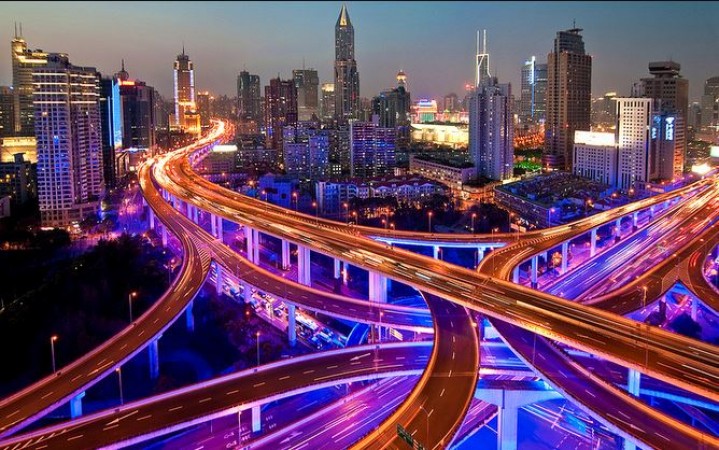
In today's fast-paced world, urban areas face numerous challenges when it comes to transportation. The ever-growing population and the increasing number of vehicles on the roads have led to congested streets and environmental concerns. As a result, alternative methods of transportation have emerged as viable solutions to mitigate these issues. This article explores various alternative methods of transportation in urban areas, highlighting their benefits and impact on urban mobility.
1. Introduction: The Need for Alternative Transportation
With the rise in population density and the associated increase in traffic congestion, urban areas are in dire need of alternative transportation methods. These methods aim to provide efficient, sustainable, and convenient options for urban dwellers, reducing dependence on private vehicles and alleviating traffic congestion.
2. Walking and Cycling: Healthy and Eco-Friendly Options
Walking and cycling are two of the simplest yet highly effective alternative transportation methods. They offer multiple benefits, such as improved physical health, reduced traffic congestion, and lower carbon emissions. Urban planners are increasingly focusing on creating pedestrian-friendly infrastructure, including dedicated cycling lanes and pedestrian walkways, to encourage these eco-friendly modes of transportation.
3. Public Transportation: Efficient and Affordable
Public transportation systems, such as buses, trams, and trains, play a crucial role in urban areas. They offer efficient and cost-effective transportation options for a large number of people. Public transportation not only reduces traffic congestion but also decreases the overall carbon footprint by transporting multiple passengers in a single vehicle.
4. Carpooling and Ride-Sharing: Sharing Rides for a Greener Environment
Carpooling and ride-sharing have gained popularity as effective means of alternative transportation. These methods involve sharing rides with others who have similar travel routes, thus reducing the number of vehicles on the road. Carpooling and ride-sharing not only contribute to a greener environment but also offer economic benefits by sharing the cost of commuting.
5. Electric Scooters and Bicycles: Compact and Convenient
Electric scooters and bicycles powered by electricity have emerged as convenient modes of alternative transportation. These compact vehicles provide a flexible and efficient way to navigate through urban areas without contributing to air pollution. With the advent of dockless electric scooter-sharing and bike-sharing programs, urban dwellers can easily access these options for short-distance travel.
6. Micro-Mobility Solutions: Innovative and Sustainable
Micro-mobility solutions, such as hoverboards, electric skateboards, and segways, offer innovative and sustainable methods of transportation in urban areas. These compact and self-propelled devices provide an eco-friendly alternative for short-distance travel, particularly for commuters traveling within a limited radius.
7. Bike-Share Programs: Promoting Cycling Culture
Bike-share programs have gained traction in many urban areas as an effective means of promoting cycling culture. These programs provide access to bicycles for short-term use, allowing individuals to conveniently cycle between destinations. By promoting cycling as a viable mode of transportation, bike-share programs contribute to reduced traffic congestion and improved air quality.
8. Light Rail Transit: Rapid and Reliable Commute
Light rail transit (LRT) systems offer a rapid and reliable mode of transportation in urban areas. LRT networks consist of electric-powered trains that operate on dedicated tracks, connecting various parts of the city. LRT provides a sustainable alternative to private vehicles, reducing travel time and enhancing urban mobility.
9. Car-Sharing Services: Flexibility and Reduced Traffic
Car-sharing services provide urban residents with the flexibility of using a car when needed without the burdens of ownership. These services allow individuals to rent cars for short periods, reducing the number of privately owned vehicles on the road. Car-sharing contributes to reduced traffic congestion, lower parking demands, and minimized carbon emissions.
10. Smart Mobility Apps: Enhancing Urban Transportation
Smart mobility apps have revolutionized urban transportation by providing real-time information and seamless integration of various transportation modes. These apps enable users to plan their routes, access public transportation schedules, locate bike-sharing stations, and even book rides through ride-sharing services. Smart mobility apps empower individuals with the information needed to make informed decisions and optimize their travel experience.
11. Green Transportation Policies: Encouraging Sustainable Practices
To promote alternative methods of transportation in urban areas, governments and city authorities are implementing green transportation policies. These policies include initiatives such as expanding cycling infrastructure, improving public transportation networks, and incentivizing the use of electric vehicles. By creating a supportive framework, green transportation policies encourage individuals to adopt sustainable transportation practices.
12. The Future of Alternative Transportation
As urban areas continue to grow and evolve, alternative methods of transportation will play an increasingly significant role in shaping urban mobility. Technological advancements, such as autonomous vehicles and hyperloop systems, hold the promise of revolutionizing transportation in the future. By embracing innovation and sustainable practices, urban areas can build a future where alternative transportation is the norm.
13. Conclusion
Alternative methods of transportation in urban areas offer viable solutions to address the challenges of traffic congestion, environmental concerns, and inefficient commuting. From walking and cycling to public transportation, carpooling, and emerging technologies, a wide range of options exist to improve urban mobility. By embracing these alternatives, individuals and communities can contribute to a greener and more sustainable future.
City Palace Udaipur: Exploring the Majestic Gem of Rajasthan
Spiritual Sanctuaries: Exploring Punjab's Top 5 Temples
The Rise of Digital Nomads: Balancing Work and Travel in the Digital Age